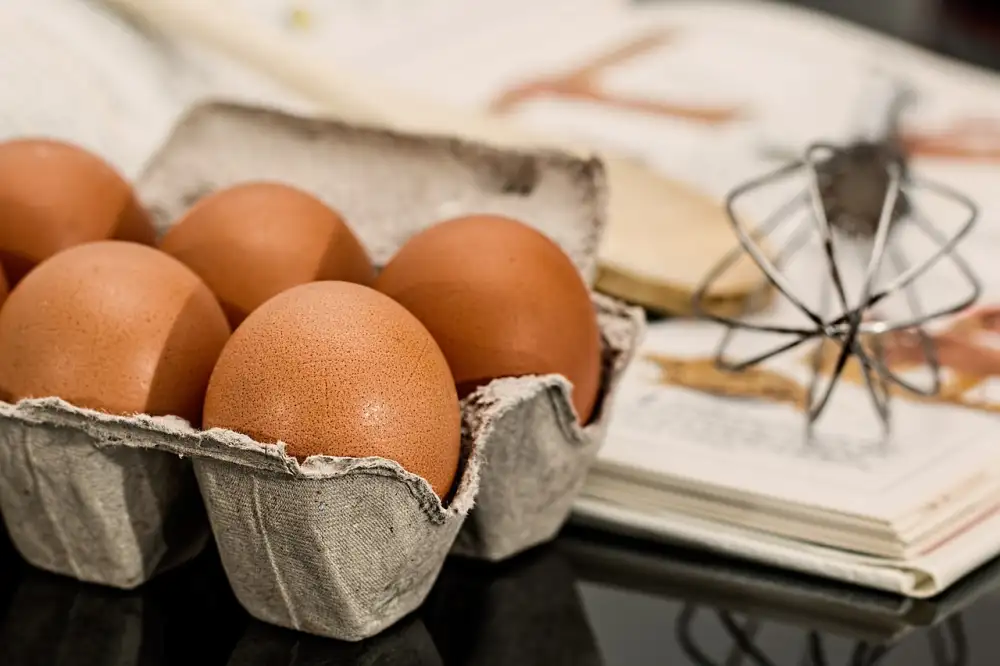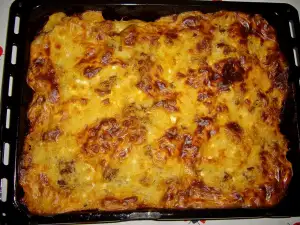Discover Delicious Low Cholesterol Recipes for a Heart-Healthy Diet

- Benefits of a Low Cholesterol Diet
- Understanding Cholesterol and its Impact on Health
- Tips for Cooking Low Cholesterol Meals
- Breakfast Ideas for a Low Cholesterol Diet
- Delicious Low Cholesterol Lunch Recipes
- Nutritious Low Cholesterol Dinner Options
- Snacks and Desserts for a Low Cholesterol Lifestyle
- Incorporating Low Cholesterol Ingredients into Your Recipes
In today's fast-paced world, maintaining a healthy lifestyle is more important than ever. One key aspect of a healthy lifestyle is following a low cholesterol diet. But what exactly does that mean? And how can you incorporate it into your daily meals?
Low cholesterol recipes are designed to help you reduce the levels of LDL (bad) cholesterol in your body, while still enjoying delicious and satisfying meals. These recipes focus on using ingredients that are low in saturated fats and trans fats, which are known to raise cholesterol levels.
By making simple changes to your cooking techniques and ingredient choices, you can create meals that not only taste great but also promote heart health. In this article, we will explore the benefits of a low cholesterol diet, understand the impact of cholesterol on our health, and provide tips for cooking low cholesterol meals.
So get ready to discover a whole new world of flavorful and heart-healthy dishes that will leave you feeling satisfied and nourished. Let's dive into the wonderful realm of low cholesterol recipes!
Benefits of a Low Cholesterol Diet
A low cholesterol diet offers numerous benefits for maintaining a healthy lifestyle. By reducing the intake of cholesterol-rich foods, such as fatty meats and full-fat dairy products, you can lower your risk of heart disease and stroke. This type of diet also helps to improve blood pressure levels and reduce inflammation in the body. Additionally, a low cholesterol diet can aid in weight management, as it encourages the consumption of nutrient-dense foods that are lower in calories. Overall, embracing a low cholesterol diet can lead to improved cardiovascular health and increased longevity.
Understanding Cholesterol and its Impact on Health
Cholesterol is a waxy substance found in the body that plays a vital role in various bodily functions. However, high levels of cholesterol can lead to serious health problems, particularly heart disease. There are two types of cholesterol: LDL (low-density lipoprotein) and HDL (high-density lipoprotein). LDL cholesterol is often referred to as "bad" cholesterol as it can build up in the arteries, leading to blockages and increasing the risk of heart disease. On the other hand, HDL cholesterol is known as "good" cholesterol as it helps remove LDL from the bloodstream.
It's essential to understand the impact of cholesterol on our health to make informed choices about our diet and lifestyle. High levels of LDL cholesterol can lead to atherosclerosis, a condition where plaque builds up in the arteries, restricting blood flow and potentially causing heart attacks or strokes. By adopting a low-cholesterol diet, we can reduce our risk of developing these serious health conditions.
In addition to diet, other factors such as genetics, age, gender, and physical activity level also influence cholesterol levels. While some individuals may have a genetic predisposition towards high cholesterol, making healthy lifestyle choices can still have a significant impact on overall heart health.
By understanding how cholesterol affects our bodies and taking steps to manage it through diet and lifestyle changes, we can promote better cardiovascular health and reduce the risk of heart disease.
Tips for Cooking Low Cholesterol Meals
When cooking low cholesterol meals, there are a few tips to keep in mind. First, opt for lean cuts of meat and remove any visible fat before cooking. Choose cooking methods such as grilling, baking, or steaming instead of frying. Use healthier oils like olive oil or canola oil in moderation. Incorporate plenty of fruits, vegetables, whole grains, and legumes into your recipes for added fiber and nutrients. Experiment with herbs and spices to enhance flavor without relying on salt. Lastly, read food labels carefully to avoid high cholesterol ingredients such as butter, cream, and processed foods. By following these tips, you can create delicious low cholesterol meals that are both heart-healthy and satisfying.
Breakfast Ideas for a Low Cholesterol Diet
Breakfast is often considered the most important meal of the day, and it's no different when following a low cholesterol diet. Start your day off right with these delicious and heart-healthy breakfast ideas.
1. Oatmeal: A classic breakfast choice, oatmeal is not only filling but also helps to lower cholesterol levels. Top it with fresh fruits like berries or sliced bananas for added flavor.
2. Egg White Omelette: Swap out whole eggs for egg whites to reduce cholesterol intake. Fill your omelette with vegetables like spinach, mushrooms, and bell peppers for a nutritious start to the day.
3. Avocado Toast: Spread mashed avocado on whole grain toast for a creamy and satisfying breakfast option. Add a sprinkle of chia seeds or a drizzle of olive oil for extra nutrients.
4. Greek Yogurt Parfait: Choose low-fat or non-fat Greek yogurt as the base and layer it with fresh fruits, nuts, and a sprinkle of granola for added crunch. This parfait is not only delicious but also packed with protein.
5. Smoothie Bowl: Blend together frozen fruits like berries or mangoes with almond milk or yogurt for a refreshing and healthy breakfast bowl. Top it with nuts, seeds, or coconut flakes for added texture.
Remember to choose whole grains, fresh fruits, and lean proteins when planning your low cholesterol breakfasts. These options will not only keep you satisfied throughout the morning but also contribute to your overall heart health.
Delicious Low Cholesterol Lunch Recipes
When it comes to maintaining a heart-healthy diet, lunchtime can be a challenge. But fear not! We have some delicious low cholesterol lunch recipes that will satisfy your taste buds and keep your cholesterol levels in check.
1. Grilled Chicken Salad: Start with grilled chicken breast, sliced cucumbers, cherry tomatoes, and mixed greens. Drizzle with a light vinaigrette made from olive oil, lemon juice, and herbs.
2. Quinoa Veggie Bowl: Cook quinoa according to package instructions and top it with sautéed vegetables like bell peppers, zucchini, and mushrooms. Add some fresh herbs for extra flavor.
3. Tuna Lettuce Wraps: Mix canned tuna with Greek yogurt instead of mayonnaise for a healthier twist. Wrap the mixture in lettuce leaves along with sliced avocado and tomato.
4. Lentil Soup: In a pot, sauté onions, carrots, and celery until softened. Add lentils, vegetable broth, and spices like cumin and paprika. Simmer until the lentils are tender.
5. Turkey Wrap: Spread whole-wheat tortilla with hummus or mashed avocado. Layer on sliced turkey breast, spinach leaves, and diced tomatoes. Roll it up tightly and enjoy!
These lunch recipes are not only low in cholesterol but also packed with nutrients to keep you energized throughout the day. So why settle for boring lunches when you can have delicious meals that are good for your heart?
Nutritious Low Cholesterol Dinner Options
When it comes to dinner, there are plenty of delicious low cholesterol options to choose from. Opt for lean proteins like skinless chicken or turkey breast, fish such as salmon or trout, and legumes like lentils or chickpeas. These protein sources are not only low in cholesterol but also high in nutrients. Incorporate plenty of vegetables into your dinner recipes, whether it's steamed broccoli, roasted Brussels sprouts, or a colorful salad. Use heart-healthy oils like olive oil or avocado oil for cooking and flavoring. Experiment with herbs and spices to add flavor without relying on salt. By choosing nutritious ingredients and preparing them in a healthy way, you can create satisfying and heart-healthy dinners that will keep your cholesterol levels in check.
Snacks and Desserts for a Low Cholesterol Lifestyle
When it comes to snacks and desserts, many people assume that they have to give up all the delicious treats in order to maintain a low cholesterol lifestyle. However, this couldn't be further from the truth! There are plenty of satisfying and tasty options that can be enjoyed guilt-free.
For snacks, opt for fresh fruits such as apples, berries, or grapes. These are not only low in cholesterol but also packed with essential vitamins and minerals. You can also enjoy crunchy vegetables like carrots or celery sticks with a side of hummus or yogurt dip.
If you have a sweet tooth, there are still plenty of dessert options available. Instead of traditional high-cholesterol desserts like cakes or cookies, try making fruit-based desserts like baked apples or grilled peaches topped with a sprinkle of cinnamon. Another great option is to make homemade frozen yogurt using low-fat yogurt and your favorite fruits.
Remember, moderation is key when it comes to enjoying snacks and desserts on a low cholesterol diet. It's important to be mindful of portion sizes and choose healthier alternatives whenever possible. By incorporating these delicious options into your diet, you can satisfy your cravings while still maintaining a heart-healthy lifestyle.
Incorporating Low Cholesterol Ingredients into Your Recipes
When it comes to preparing low cholesterol meals, it's important to choose ingredients that are heart-healthy. Opt for lean proteins such as skinless chicken, turkey, and fish like salmon or trout. These options are not only low in cholesterol but also rich in omega-3 fatty acids, which can help reduce inflammation and promote heart health.
Swap out saturated fats with healthier alternatives like olive oil or avocado oil. These oils are high in monounsaturated fats, which can help lower bad cholesterol levels. Use them for sautéing vegetables or as a base for salad dressings.
Incorporate more fiber-rich foods into your recipes. Whole grains like quinoa, brown rice, and whole wheat pasta are excellent choices. They provide essential nutrients while helping to lower cholesterol levels.
Don't forget about fruits and vegetables! They are naturally low in cholesterol and packed with vitamins, minerals, and antioxidants. Add a variety of colorful produce to your dishes to boost their nutritional value.
Instead of using regular dairy products, opt for low-fat or non-fat versions. Choose skim milk instead of whole milk and use Greek yogurt instead of sour cream. These substitutions will help reduce your intake of saturated fat.
Lastly, be mindful of the seasonings you use in your recipes. Avoid excessive salt as it can lead to high blood pressure. Instead, experiment with herbs and spices like garlic, turmeric, cumin, and cinnamon to add flavor without adding extra sodium.
By incorporating these low cholesterol ingredients into your recipes, you can create delicious meals that are not only good for your heart but also satisfying to your taste buds.
In conclusion, embracing a healthy low cholesterol lifestyle is not only beneficial for your heart health but also for your overall well-being. By incorporating delicious low cholesterol recipes into your daily meals, you can enjoy flavorful dishes while taking care of your body. Remember to choose ingredients that are low in saturated fats and high in fiber, such as fruits, vegetables, whole grains, lean proteins, and healthy fats like olive oil and avocado. With a little creativity and experimentation in the kitchen, you can create a wide variety of tasty low cholesterol meals that will keep your heart happy and your taste buds satisfied. So why wait? Start making small changes today and embark on a journey towards a healthier future!
Published: 01. 12. 2023
Category: Food



